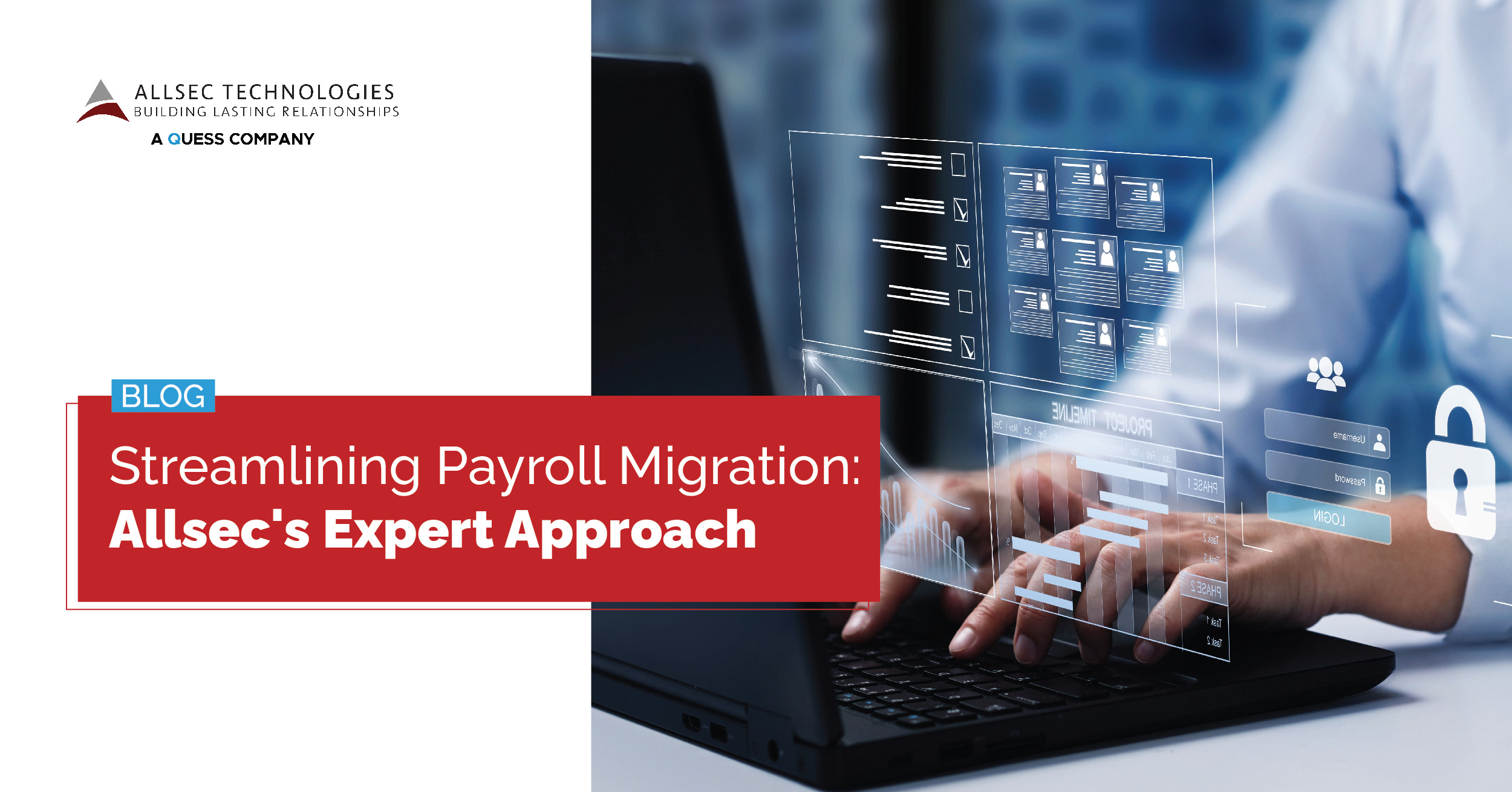
In the dynamic business setting where there are constant technology advancements, organizations that depend on outmoded payroll systems may often find themselves in need of transitioning to a new payroll system. This critical process requires meticulous planning, execution, and expertise to ensure a seamless shift without disrupting business operations. In this blog, we’ll walk you through the steps involved in transitioning to a new payroll system and how Allsec makes this transition smooth and simple for its clients.
Initial Assessment
The first step in any successful payroll migration process is a comprehensive assessment of the current payroll system. Allsec’s team of experts conducts a thorough analysis to understand the client’s existing payroll processes, data, and specific requirements. This initial assessment helps identify potential challenges and opportunities for improvement.
Design and Planning
After gathering all necessary information, Allsec develops a customized plan tailored to the client’s needs. This plan includes a detailed timeline, resource allocation, and a clear roadmap for the entire migration process. This step ensures that all stakeholders are on the same page and understand their roles in the transition.
Data Migration
One of the most critical aspects of payroll migration is the transfer of data from the old system to the new one. Allsec’s data migration experts employ secure and efficient methods to ensure the accurate and safe transfer of all payroll data, including employee records, tax information, and payroll history. Data integrity is a top priority to prevent any discrepancies or issues post-migration.
System Configuration
Allsec’s team configures the new payroll system to align with the client’s specific requirements. This involves setting up payroll rules, tax codes, benefits, and other parameters to ensure accuracy and compliance with local regulations. Extensive testing is conducted to validate the system’s functionality.
Employee Training
To ensure efficiency of use, Allsec provides comprehensive training for the client’s HR and finance teams. This training covers the new payroll system’s functionalities, reporting tools, and troubleshooting procedures. Employees are equipped with the knowledge and skills needed to navigate the new system effectively.
Parallel Run and Testing
Before the final migration, Allsec conducts a parallel run where the old and new payroll systems run simultaneously for a defined period. This allows for a direct comparison of results, identifying any discrepancies that need to be addressed. Rigorous testing ensures that all calculations, deductions, and processes are accurate in the new system.
Final Migration and Go-Live
Once all issues are resolved and the client is satisfied with the results of parallel testing, the final migration takes place, with minimal downtime or disruption to business operations. A detailed checklist is followed to verify that all data is successfully transferred and that the payroll runs without any issues.
Post-Migration Support
After the migration is complete, Allsec provides ongoing payroll services support to address any unexpected issues, questions, or concerns. Continuous monitoring and feedback mechanisms are established to maintain the system’s integrity and accuracy.
Transitioning to a new payroll system is a complex process that requires support and planned effort from everyone involved. By helping organizations seamlessly adapt to newer payroll technologies, Allsec enables them to focus on their core business objectives with confidence.


